Animal Well: Not Your Average Metroidvania
Down the well you go
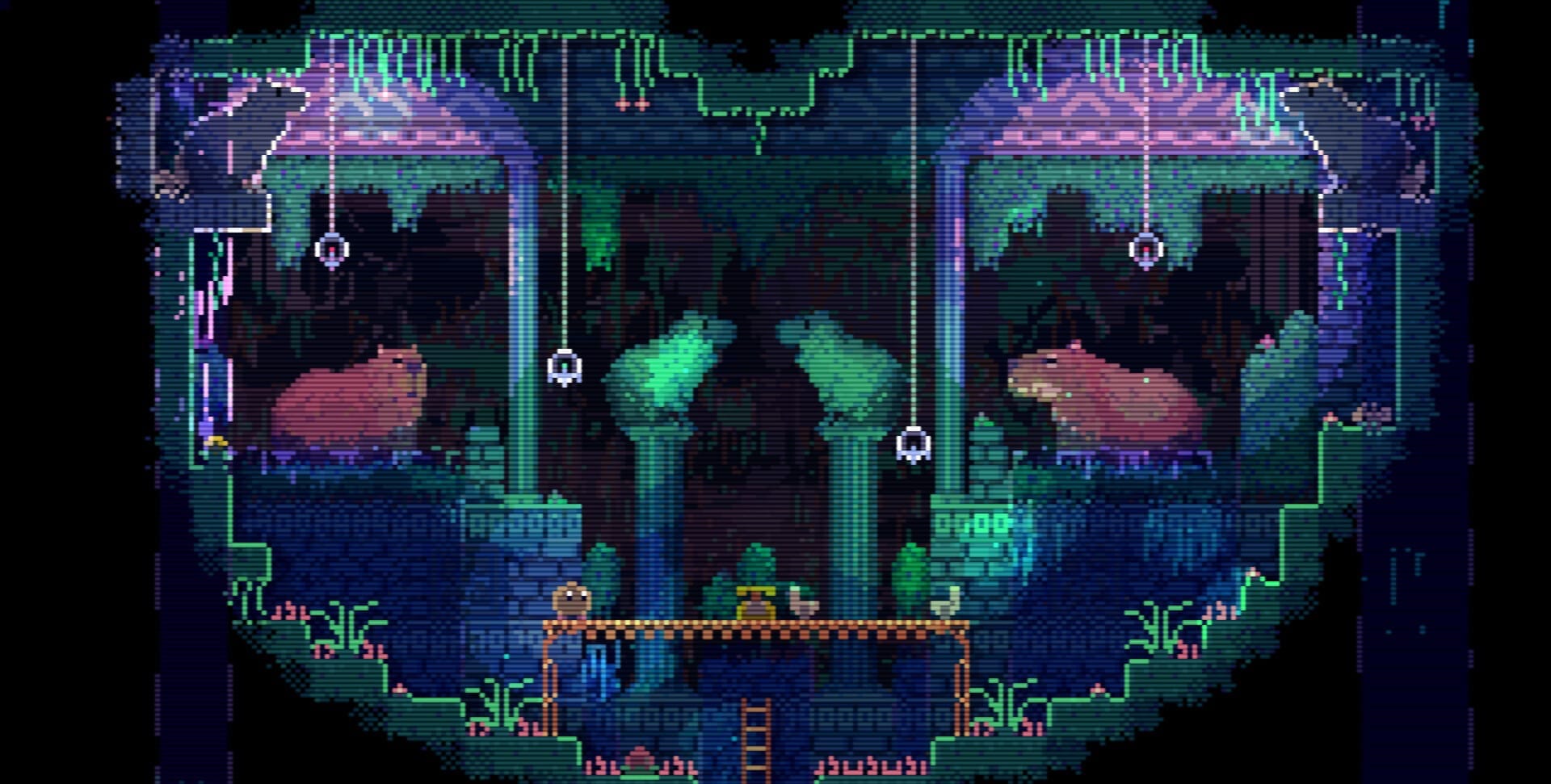
Calling a game ambitious can come with expectations. A game with great ambition might attempt to execute never-before-seen mechanics. It may be injected with enough budget to push the bounds of what is technologically possible or strive for an unparalleled level of scope in its systems. When I call Animal Well ambitious, know that it does not neatly fit into any preconceived notion of what that word has come to mean when discussing a video game. No, Animal Well joins a pantheon of games that find their greatest successes not in constructing new and unfamiliar ways to interact with and experience a game, but rather in deconstructing what makes games the distinct and inimitable medium that they are.
Sometimes when you play a new game you can feel the development process behind its immediate appearance. The more you investigate and become familiar with it, seams begin to show. Areas where developers’ desires conflicted with the realities of making a game; remnants of content that had to be cut if not for budget or time; and ideas that didn’t coalesce into their full potential. This is, of course, an understandable part of any creative endeavour.
Yet, Animal Well feels different. It is so complete in every facet of its design and construction, every constituent part complimenting the game so perfectly that each pixel and item, each new area and secret, all feel utterly essential to its whole. It is as if it has always existed, a long-forgotten artifact nestled in a dusty corner of an attic, just waiting for someone to finally stumble upon it and dare discover its depths.
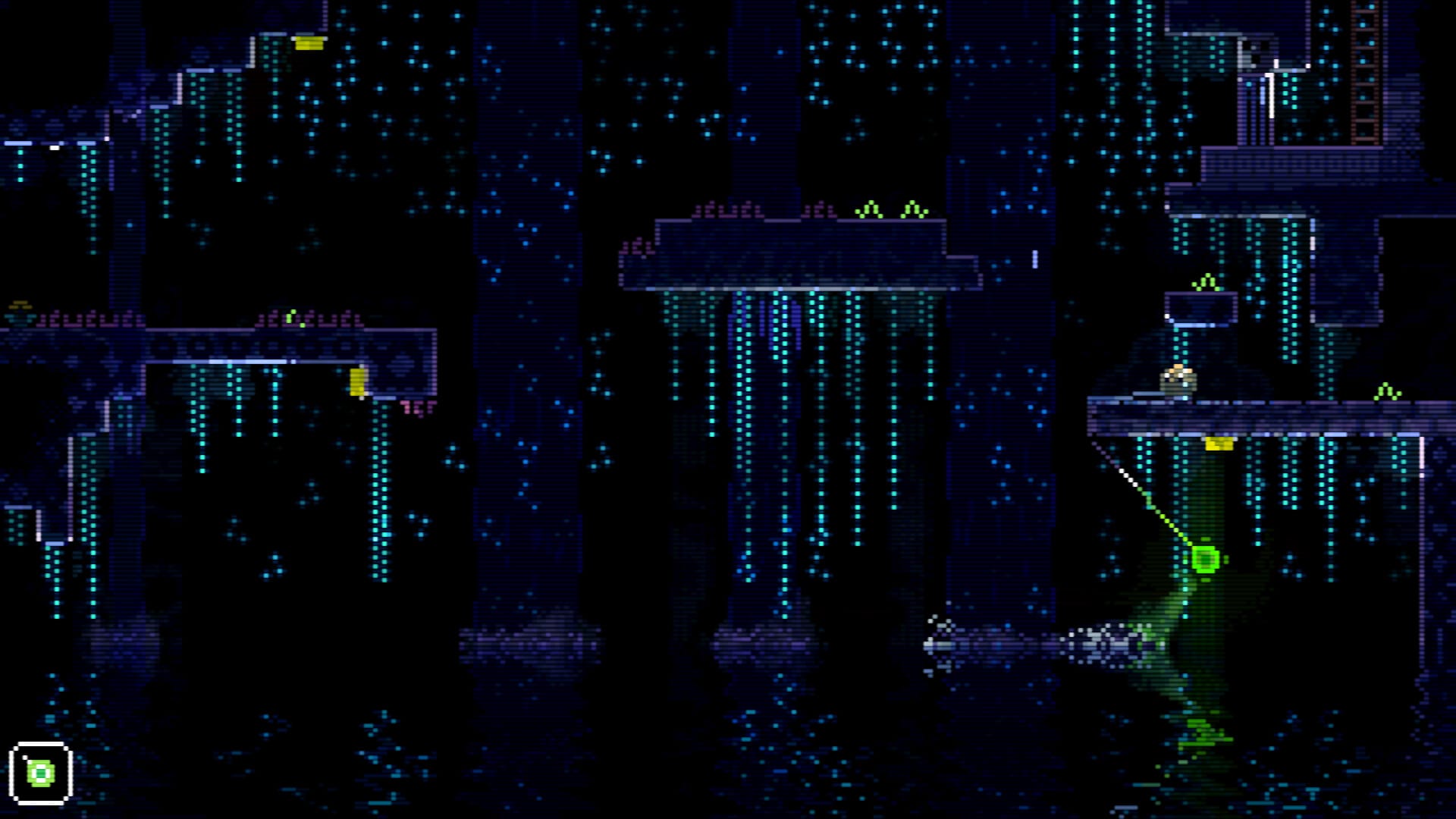
The game opens with four flames sequentially being extinguished on a black screen and your character (nothing more than a brown blob) emerging from within an unfurling flower. From here on out it’s up to you. No way-point, no direction to follow – just this little blob on a quest to find these four flames hidden within the vast expanses of a well full of creatures both cute and horrifying. As you progress a beautiful, dense, and atmospheric puzzle box reveals itself, one that only unmasks its layers to those prepared to give themselves over to its rules and opaque machinations.
At its most fundamental Animal Well is a Metroidvania. You work your way through a set of areas acquiring items that aid progression. Yet, Animal Well finds its singularity through inversions of the genre.
The game has no conventional combat to speak of. You cannot attack enemies; instead, the game encourages you to find creative solutions to avoid and distract the various denizens of its world. It really feels wrong to refer to any threat you may encounter as an ‘enemy’ in the traditional sense. The titular animals feel like natural inhabitants of this space, simply existing in and sharing the underground ecosystem of caverns and crawlspaces with you.
In that sense, Animal Well doesn't redefine the gameplay leanings found in similar titles but recontextualises them. Indeed, one of the first major discoveries you're likely to make is that the items you acquire have multiple uses. As befitting the game’s character, it doesn’t explicitly tell you this but as you slowly tinker away at increasingly difficult areas you are bound to discover their multi-faceted qualities. I won’t spoil what these are, but it lends Animal Well an elasticity in its solutions to puzzles similar to the open-ended building and physics in The Legend of Zelda: Tears of the Kingdom (although not to quite the same extent). As such, the dynamic shifts, as you no longer need to meet the challenge of a puzzle, but the puzzle needs to withstand you. Even a cursory glance at the recently created Animal Well subreddit is full of people sharing ways to solve puzzles that are clearly not the intended solutions. Sequence breaking is not only allowed but implicitly encouraged.
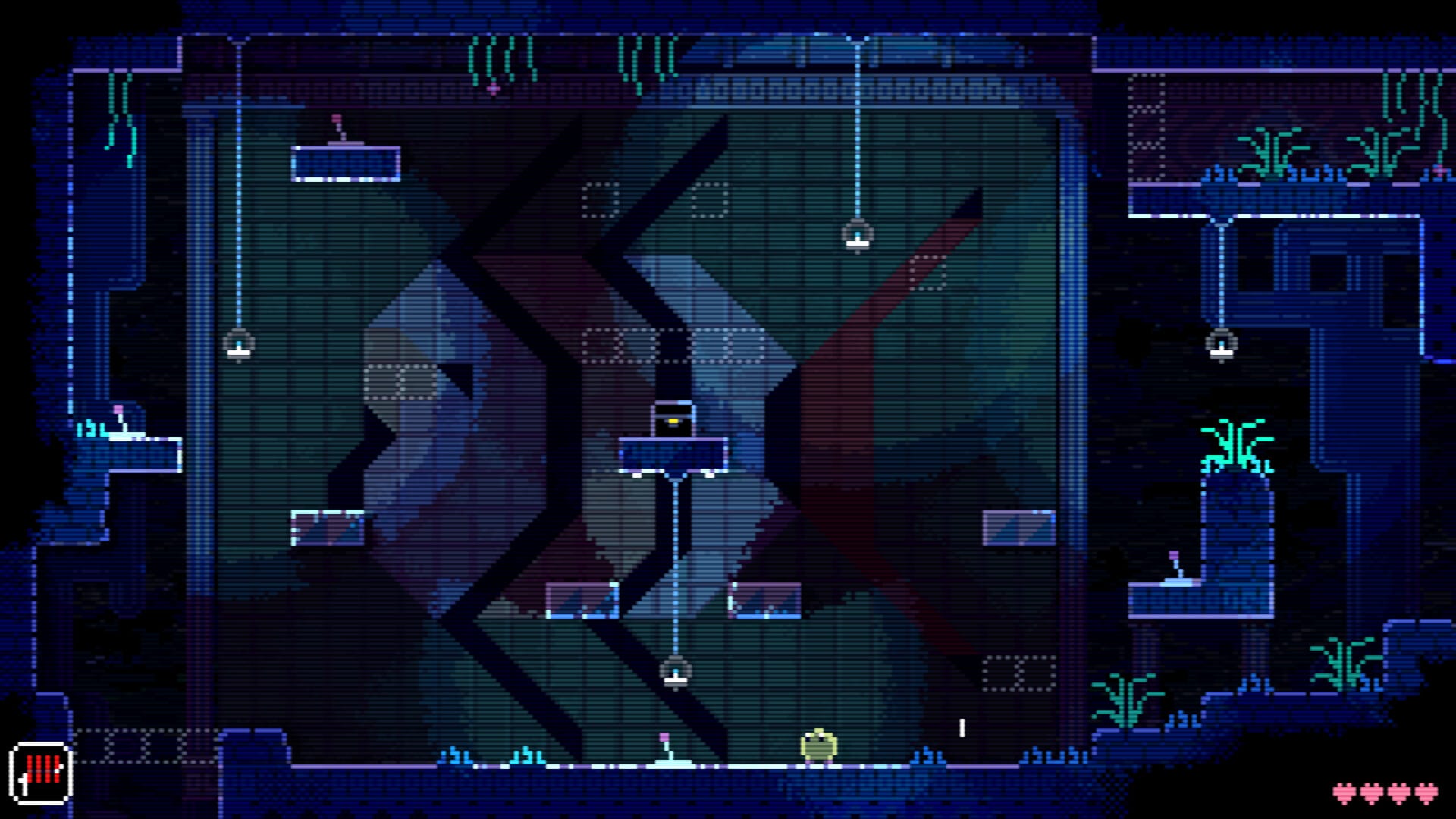
Animal Well's art style is immediately compelling: nostalgic and inventive, familiar and otherworldly. The pixel art is used not to make the game's visual language more readable, but quite the opposite. The simpler foreground of perpendicular walls and platforms contrasts with the contorting, oftentimes shapeless background, helping instill a sense of continual unease with what may lurk out of sight, ready to emerge from obscurity. Such disparate design also extends to smoke effects and pools of water which are rendered in incredible fidelity when compared to other elements, contributing an off-kilter, alien texture to the environment. While the animals are earthly, the remaining features that inhabit the well feel sprung from a Hayao Miyazaki fever dream. From the grand, ancient feeling of its open caves down to the crumbling statues peppering the world, it gives the impression they are commemorating legendary figures of myth, long forgotten to the tempestuousness of time.
Beyond this, the game's sound design is one of its most impressive technical accomplishments. While the music is appropriately understated and bombastic in moments it needs to be, the atmospheric soundscape that bounces around the harsh, damp walls of this subterranean domain sells the vibe as much as anything else. Water droplets fall lazily from cliff faces, pattering unevenly on the ground. Echoed chirps from unseen birds bounce around you, leaving you unsure of their origin point. These sounds (and many more) contribute a tremendous immersive quality often relegated to games of a much larger production.
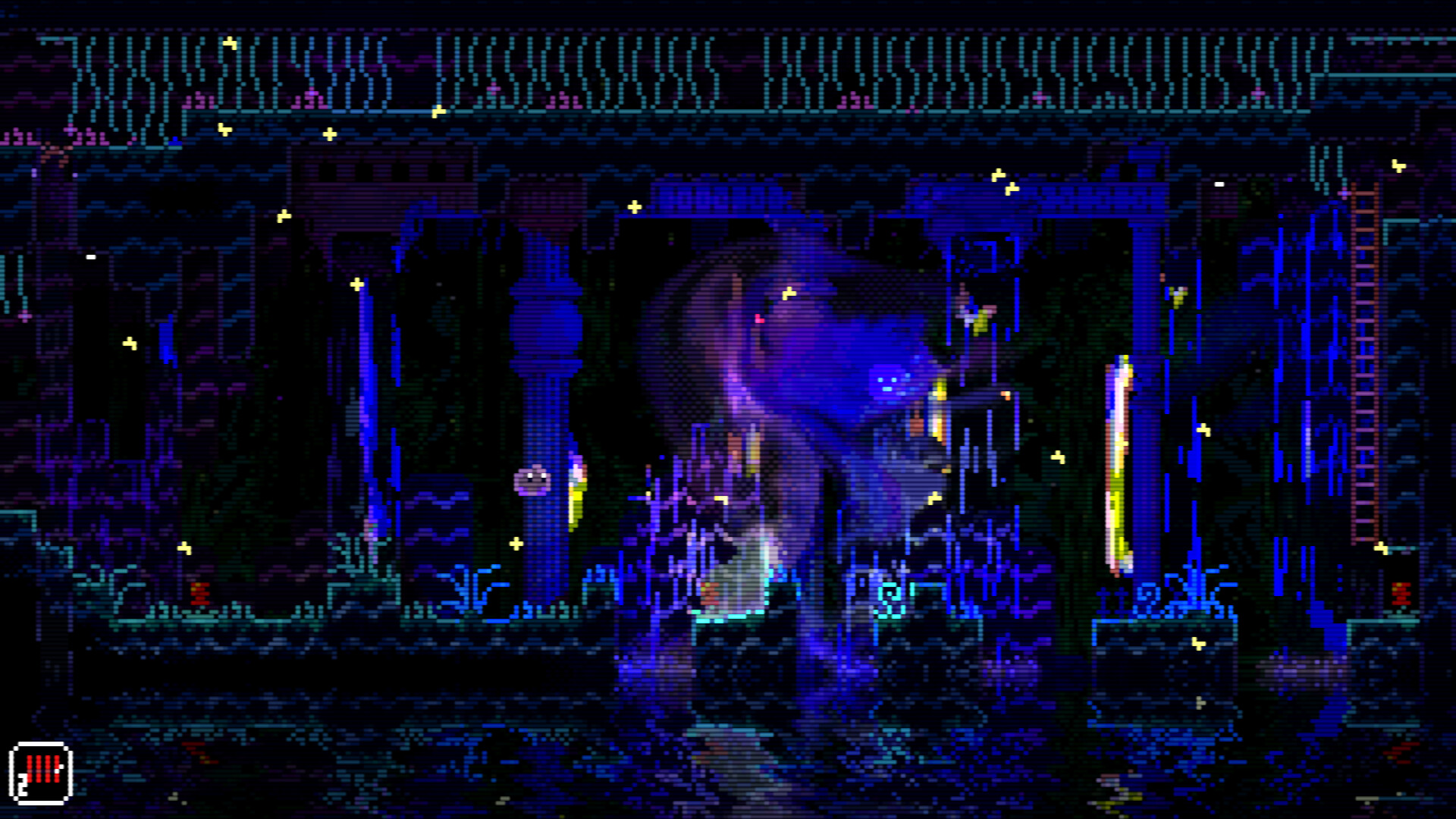
The construction of the well itself most keenly creates this immersive quality. Like all good Metroidvania's, your own mental image of locations and points of interest are filled in as you make your way through the winding pathways of the labyrinthine map. But this is only accomplished through great effort; I can see many players getting easily lost, confused, and frustrated if they do not actively try to learn their way around.
Thankfully, having a unique puzzle in each room allowed me to remember the areas I had been to and those yet to be explored more than any combat challenge could have. Every time I retraced my steps I would immediately recall the mental energy I had exerted to move through the different zones. By the end of the game, I could pinpoint the location of each area and navigate between them effortlessly—something I can't say for most other entries in the genre.
Like all discovered artifacts, it is not without its blemishes though. I would often understand some solutions to certain puzzles incredibly quickly but would need to continuously retry a series of platforming and item use that bordered on frustrating rather than fun. One of the final puzzles to recover a flame, for instance, required a trial-and-error gauntlet through areas that you had already thoroughly explored. The game's competent but uninspiring platforming did not alleviate my growing annoyance whilst I continuously restarted. These situations were uniquely irritating primarily due to their infrequency. The vast majority of the game is explorative, challenging your curiosity, not your proficiency with the controls, so when I did encounter a challenge that required precise combinations of jumping and quick use of my items it pulled me out of the game's otherwise engrossing, beautiful flow.
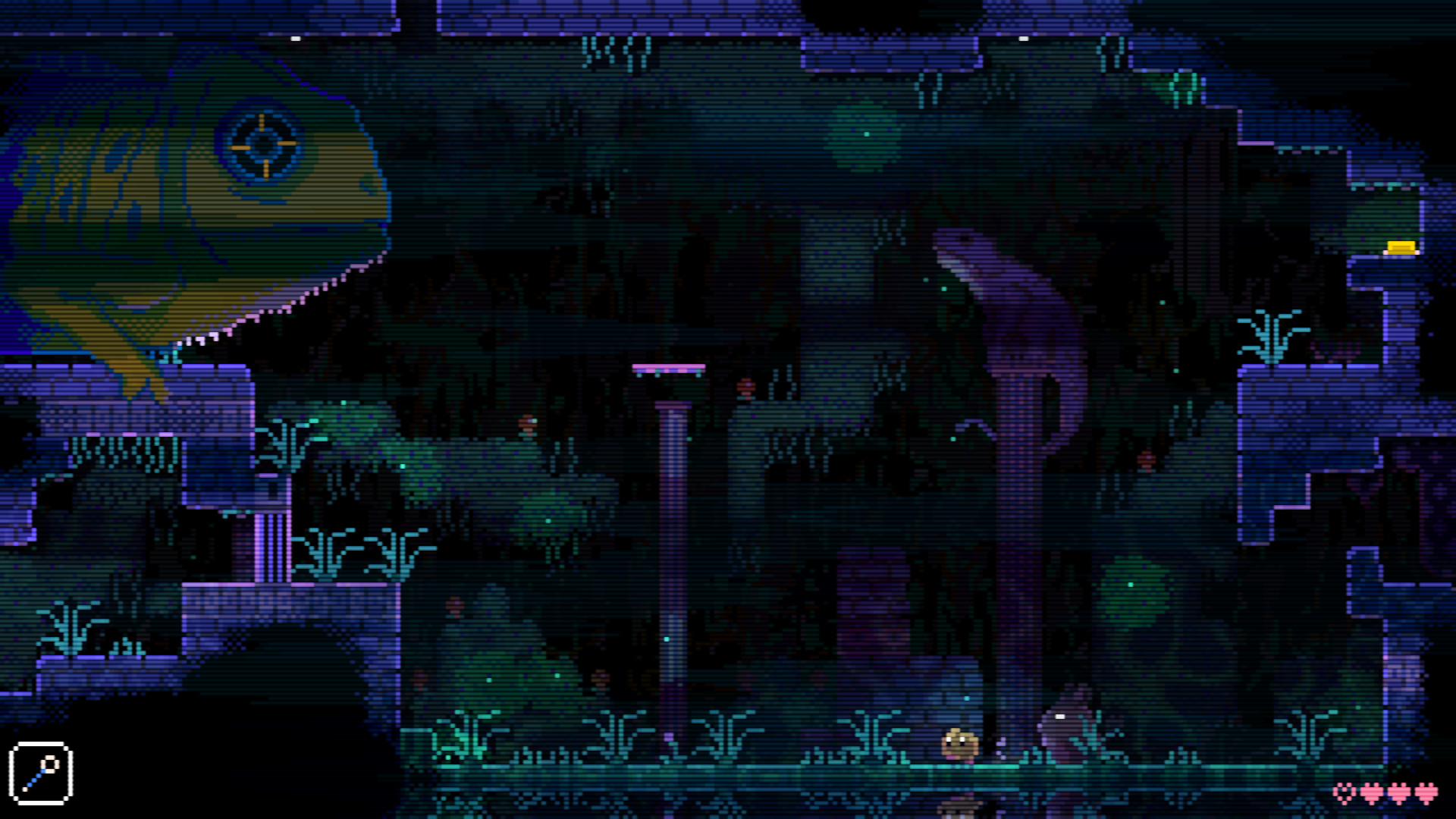
Such a minor inconvenience does little to sully my enthusiasm for this wonderful creation though. One of the most brilliant aspects of Animal Well is something I have not even touched on yet, something the game does not make clear until you really begin to claw away at its edges.
It can is best described as split between three distinct layers: The first is what I have so far been discussing, a hunt for four flames; the second is a hunt for 64 hidden eggs tucked away in the margins of its map that somewhat act as 'end-game' content; the third... well the less I spoil the better. Let's just say that this third layer has not been solved yet and there is an active community of people in the game's Discord working together to fully decode this beautiful, enigmatic, and uniquely crafted masterpiece of a game.
Like Fez, Outer Wilds, and Tunic before it, Animal Well shows that the interactive art form of video games is at its best when providing experiences that cannot be replicated in other mediums. No movie or book could hope to instill the same level of wonder and awe that coursed through me while conquering its secrets, and frankly, few video games have either. Animal Well isn't just the best game I've played this year; it's one of the most impressive games I've played this generation.
